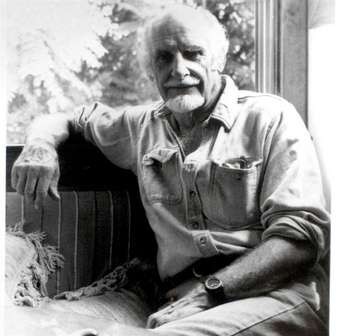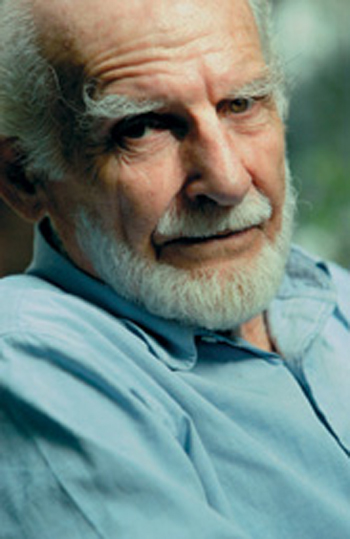
January 24, 2007

Hot on the heels of the death of superspy E. Howard Hunt (whose first wife had a magical middle name, Wetzel), comes word of the passing of a Fortean writer of some note who also was a spy, Peter Tompkins.
Peter Tompkins, 87, a former journalist, World War II spy and best-selling author, died this morning, Wednesday, January 24, 2007, at his home in Shepherdstown, West Virginia.

Among those interested in the unknown, Tompkins will be remembered for several books about pyramids, obelisks, and other “mysteries,” the most successful bestseller being The Secret Life of Plants. He also had several friends (with varied OSS and other intelligence backgrounds) who were interested and involved in the search for the Yeti. His son, Ptolemy Tompkins, once wrote that Tompkins’ home was frequently visited by “Yeti hunters.” I think I knew some of the people that Ptolemy was talking about.
Peter Tompkins was born April 19, 1919, in Athens, Georgia, but spent much of his childhood in Rome after his parents moved there to study art. His father was a sculptor; his mother, a painter. Schooled in France, Italy and Switzerland, Tompkins returned to the United States to attend Harvard College, but left early to become a war correspondent for the New York Herald Tribune and NBC.

In 1941, Tompkins was recruited by “Wild Bill” Donovan to join the U.S. Office of Strategic Services, the precursor to the CIA. He served as deputy to the chief of psychological warfare during the British-American invasion of north Africa in November 1942, as part of Operation Torch.
Guess who was the head of Operation Torch? None other than someone who was to become one of Tom Slick’s earliest Yeti consultants, Carleton Coon, who was also a friend of Ivan T. Sanderson (who was in British naval intelligence, as was Ian Fleming). Coon was to go on to be a famed professor of anthropology after World War II, who wrote and spoke about Yeti and Bigfoot. Coon died on June 6, 1981, soon after my visit to interview him at his seaside home in Gloucester, Massachusetts.
Within espionage circles Coon’s work for the OSS was legendary. One of the first missions of Donovan’s spy organization was Operation Torch, the invasion of North Africa, and Coon worked with Peter Tompkins. Carleton Coon was in charge of Torch and the affair was such a success that it insured the future of the OSS. OSS’s leadership, who were later connected to the Central Intelligence Group, then the Central Intelligence Agency, would never forget Coon for his contributions to the budding American intelligence community. Tompkins too became linked to spy work for several years and was thought of very highly within the OSS.
With paramilitary, parachute and secret radio training, Tompkins was sent to Salerno in southwestern Italy in 1943 to infiltrate agents into enemy territory. Tompkins spent five months filing intelligence by secret radio and promoting partisan activities before being transferred to Berlin to spearhead OSS activities there. He was OSS Officer in Charge, Rome Area, and after the liberation of Italy moved on to spy in France and Germany. He resigned from the OSS in 1946 and declined to join the CIA, unlike Carleton and the former OSS agent George Agogino who would go on to be associated with the CIA and the Yeti search.
After the war, Tompkins was hired by CBS newsman Edward R. Murrow to cover the 1948 elections in Italy. Later, in 1954, he returned to New York to join CBS-TV as writer-director of hour-long weekly features, “Adventure” and “The American Week.”
Tompkins later wrote mainstream magazine articles and numerous books, including The Secret Life of Plants (written with another shadowy figure, Christopher Bird, with whom he wrote other works), Secrets of the Great Pyramid, Mysteries of the Mexican Pyramids, The Magic of Obelisks, A Spy in Rome and Italy Betrayed.
Here’s hoping Peter Tompkins is solving some of those mysteries now.
About Loren Coleman
Loren Coleman is one of the world’s leading cryptozoologists, some say “the” leading living cryptozoologist. Certainly, he is acknowledged as the current living American researcher and writer who has most popularized cryptozoology in the late 20th and early 21st centuries.
Starting his fieldwork and investigations in 1960, after traveling and trekking extensively in pursuit of cryptozoological mysteries, Coleman began writing to share his experiences in 1969. An honorary member of Ivan T. Sanderson’s Society for the Investigation of the Unexplained in the 1970s, Coleman has been bestowed with similar honorary memberships of the North Idaho College Cryptozoology Club in 1983, and in subsequent years, that of the British Columbia Scientific Cryptozoology Club, CryptoSafari International, and other international organizations. He was also a Life Member and Benefactor of the International Society of Cryptozoology (now-defunct).
Loren Coleman’s daily blog, as a member of the Cryptomundo Team, served as an ongoing avenue of communication for the ever-growing body of cryptozoo news from 2005 through 2013. He returned as an infrequent contributor beginning Halloween week of 2015.
Coleman is the founder in 2003, and current director of the International Cryptozoology Museum in Portland, Maine.
Filed under Breaking News, CryptoZoo News, Cryptozoologists, Cryptozoology, Obituaries